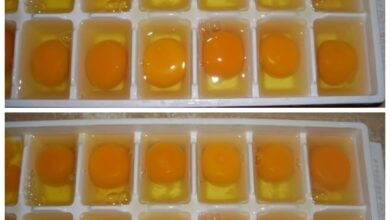Mom shares disgusting photo of chicken breast that shreds into spaghetti

Unraveling the Mystery Behind Spaghetti-Like Chicken: A Call for Conscious Consumption
ADVERTISEMENT
In the heart of Texas, a disturbing culinary discovery by a mother has sparked widespread debate and curiosity across social media platforms. The incident, involving a chicken breast that bizarrely separated into spaghetti-like strands during preparation, has raised eyebrows and questions about the integrity of our poultry products. This article delves into the peculiar case, shedding light on the potential reasons behind such an anomaly and its implications for consumers and the poultry industry alike.
ADVERTISEMENT

ADVERTISEMENT
A Surprising Discovery in the Kitchen
Alesia Cooper, a resident of Irving, Texas, and a mother of two, was taken aback when the chicken breast she intended to cook for her children’s dinner transformed into an unrecognizable form. The raw poultry, which she was washing in anticipation of cooking, inexplicably shredded into string-like pieces, resembling spaghetti more than meat. Cooper’s decision to share her experience on Facebook, accompanied by a photo of the unusual chicken, quickly captured the public’s attention, igniting discussions about the nature of the meat on our plates.
Speculations and Explanations: From Lab-Grown to Hormone-Fed Chickens
The online community responded to Cooper’s post with a mix of astonishment and speculation. Some suggested that the chicken might be a product of modern technological advancements, such as 3D printing or lab cultivation, proposed as solutions to recent challenges like bird flu outbreaks and resource shortages. Others posited a more conventional explanation, attributing the spaghetti-like appearance to the practices of some chicken producers who administer growth hormones to accelerate the birds’ development.
The Science Behind “Spaghetti Meat”
The phenomenon of spaghetti meat, alongside the similarly concerning “woody breast,” has been acknowledged by researchers and industry experts as a consequence of breeding strategies aimed at meeting the soaring demand for chicken meat. These breeding practices, designed to produce larger-breasted chickens at a faster rate, have not only led to more meat per bird but also to abnormalities in meat texture. Dr. Massimiliano Petracci of the University of Bologna emphasizes the link between these abnormalities and the rapid growth of birds, a correlation that has significant ethical and welfare implications for the chickens involved.
The Evolution of Broiler Chickens
Data from the National Chicken Council illustrates the dramatic changes in broiler chicken growth over the decades. Comparing the figures from 2000 to 2023, chickens now reach the market at the same age but with significantly increased body weight. This trend underscores the industry’s response to consumer preferences for white meat, leading to chickens with disproportionally larger breasts. Dr. Michael Lilburn from Ohio State University highlights the role of consumer demand in driving these industry changes, pointing out the challenges and ethical considerations of continually increasing the size and meat yield of poultry.
Toward Responsible Consumption
The viral story of the spaghetti-like chicken breast serves as a reminder of the complexities and ethical considerations inherent in our food system. As consumers, it’s crucial to remain informed about the origins and production methods of the food we eat. The demand for cheap, convenient chicken products must be balanced with considerations for animal welfare and sustainable practices. By advocating for transparency and responsibility in the poultry industry, consumers can contribute to a more ethical and sustainable food system.




